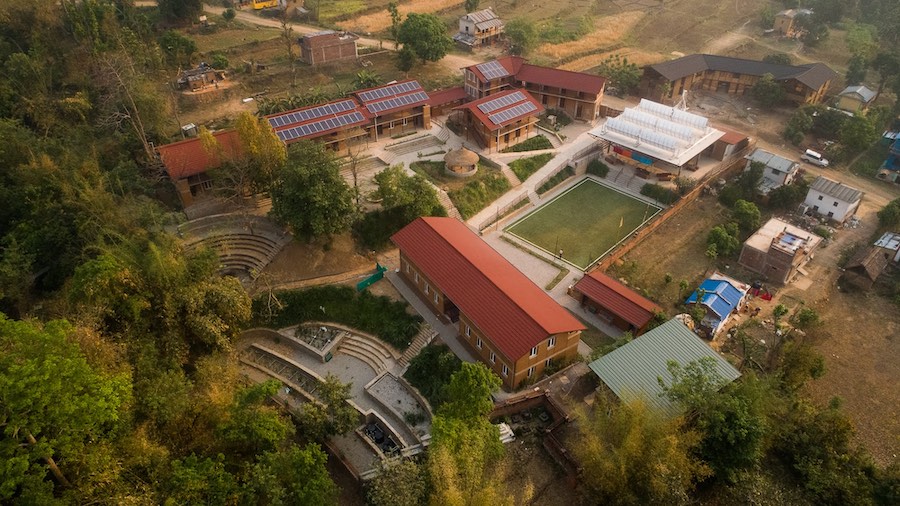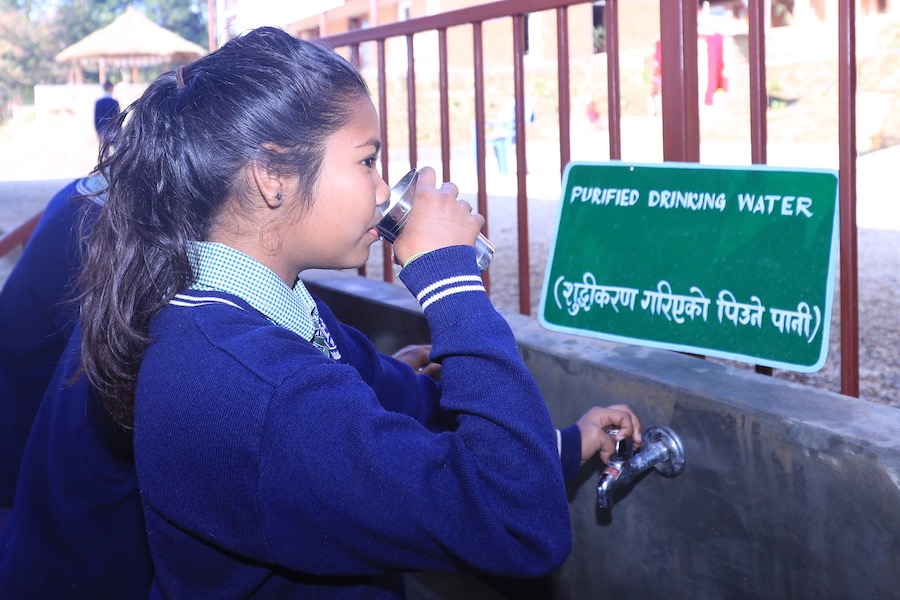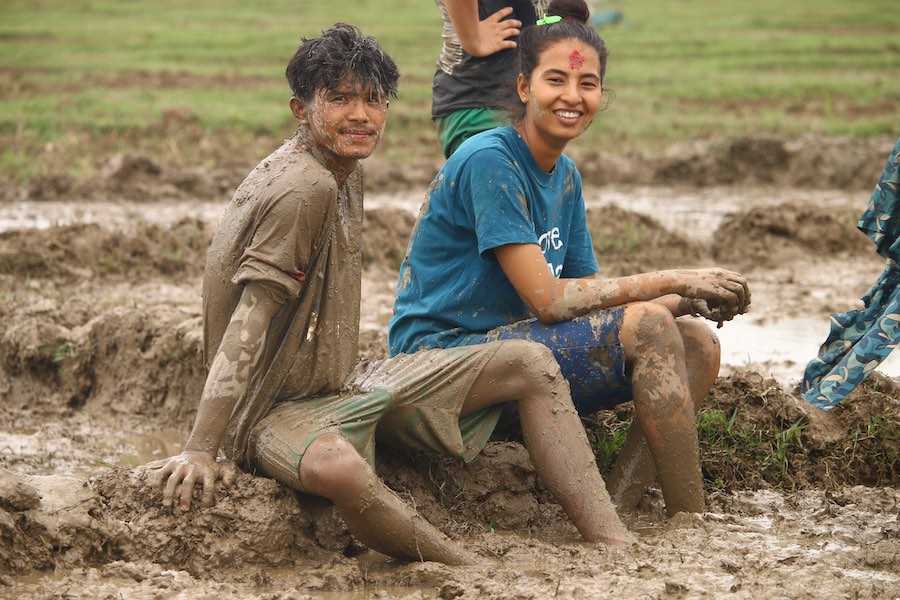Our Green Campus

At Blink Now, we make sure all our work aligns with our core values: gender equality, economic empowerment and environmental sustainability. When it was time to build a new campus for its Kopila Valley School, we knew that it was a chance for us to put our principles into practice! In addition to creating a campus that would preserve the traditional terracing of the earth and match the local Nepali architecture, we wanted to show our students, and the world, that Kopila Valley could be a model of sustainable design.
The school we built isn’t just an amazing example of how a building can mitigate its environmental impact—it’s perfect for the teaching and learning our teachers and students do here every day!
RAMMED EARTH WALLS

To build the main structure, we decided against traditional concrete walls (which have an enormous carbon cost) and instead chose rammed earth walls. With the addition of just a little bit of PPC cement, which is available as a byproduct from coal power plants, the walls are protected against the moisture of monsoon season. We reinforced the walls with steel bars to make the building earthquake resistant—a major concern in a place like Nepal. The walls are also fire resistant and, since they’re 18 inches thick, provide great sound insulation, which can be helpful in a school of over 400 sometimes noisy children!
But our rammed earth walls don’t just provide strength and durability. Because of their bulk, they help the school stay cool in the summer and warm in the winter. Our design team placed windows and doors strategically to maximize sunlight and fresh air in our classrooms, and designed terraces on the southern facing walls to provide shade that prevents the classrooms from overheating in the hottest part of the year.
POWERED BY THE SUN

Using solar panels, our school generates all of its own electricity, producing about 150 kWh of power a day with a 20 kVA off-grid battery system which powers the campus during the night.
The school also includes a concentrated solar power system that sits on the roof of the cafeteria. This system consists of 3 rows of curved mirrors that focus sunlight on an insulated pipe containing oil which is heated to very high temperatures, and is then transported down to cooking pots in the kitchen. On an average sunny day we cook all our rice, lentils and vegetables using this system—that’s enough for 500 hungry people!
RECYCLING RAINWATER

Of course, a school with so many people doesn’t just need power in the form of electricity and heat. We also needs a steady supply of clean water. Nepal receives a lot of rain—1.6 meters per year! But all that water isn’t spread out evenly throughout the year. Most comes during the wet, rainy monsoon season that lasts from June to August. The answer is a carefully designed gutter system that leads the rain from the roof of the school through a filtration system and to a 300,000 liter cistern under our cafeteria. The water is later passed through two biosand filters that perform both biological and physical filtration, making it safe for washing our hands and our dishes. Water that undergoes yet another screen filtration process is safe enough for drinking. It tastes great!
But even water that goes down the drain has more work to do. Our school includes constructed wetlands designed to mimic natural wetlands, one of nature’s most effective filters. Water from the sinks and showers (greywater) passes through two vertical flow wetlands containing sand media, then two biosand filters. The process makes it safe for washing floors and flushing toilets.
Water from toilets (blackwater) passes through a separate horizontal flow wetland, which contains stone chip media. This wetland has an aeration system, which improves treatment and reduces smells. Once through this process, the water can be used to irrigate plants--though only non-edible ones. The solids from the blackwater get directed to a pressurized tank where they’re converted into biogas for cooking!
And while the rainwater that falls on the school itself supplies what we need for drinking, washing and cleaning, the rainwater that falls throughout the rest of the grounds is put to use too, with permeable pavers that allow it to percolate into the soil and replenish groundwater resources. Our slopes are stabilized by a robust root system, which also stores water, increases organic matter in the soil and prevents erosion—and supports more than 100 species of trees!
LIVING OUR COMMITMENT

Our school’s campus is a model for other schools that want to grow in responsible ways. And it’s a lesson for all the students at Kopila Valley that environmental sustainability is something that we can all do something about!
That principle is reflected throughout the school’s curriculum. Students at Kopila Valley don’t just learn how our school helps protect the environment—they actually interact with the food system by planting some of the rice we consume each year! During the annual Earth Day celebration (which we celebrate for a full week!) teachers focus their lessons on the importance of the environment, and select staff members get the opportunity to participate in “permaculture training” to learn more about Surkhet’s ecosystem. A cooperative that grew out of our Women’s Center has even started selling rice bags repurposed into reusable totes to minimize the need for single use plastic bags!